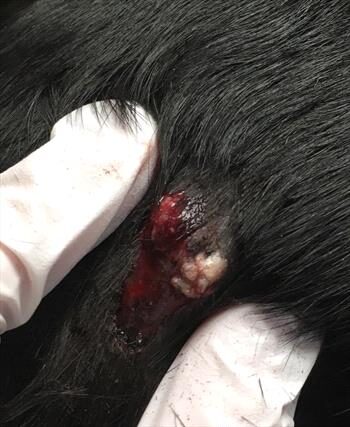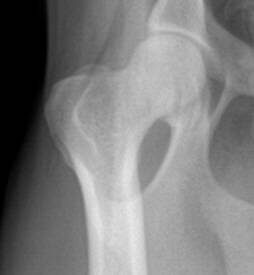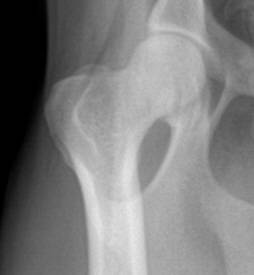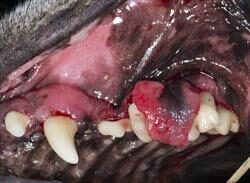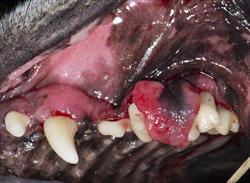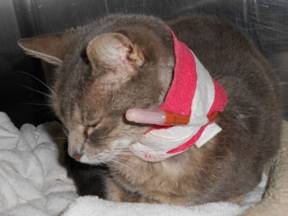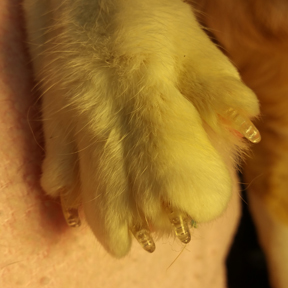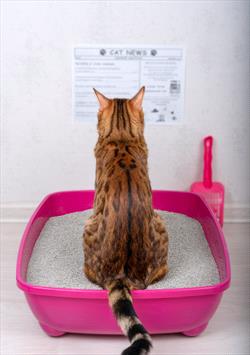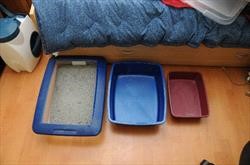Food Allergies in Dogs and Cats
Your Pet’s Itchy Skin
Itchy skin in dogs and cats is often more than just a minor annoyance. Red, oozing bald patches, rashes, and large expanses of hair loss are unfortunate markers of very real discomfort. The cause should be determined.
Food allergy is one of the itchiest conditions for cats and dogs. Animals eat a variety of processed food proteins, flavorings, and colorings that are further processed inside their bodies. Proteins may be combined or changed into substances recognized by the immune system as foreign invaders to be attacked.


The resulting inflammation may target the GI tract or other organ systems, but in dogs and cats, the skin is frequently included in this immunologic activity.
Cats itch around the face or neck, which produces scabs and hair loss. In dogs, signs include facial itching, foot or limb chewing, itchy anal area, and recurrent ear infections.
Many people erroneously assume itching due to food allergy requires a recent diet change of some sort. In fact, the opposite is true.
Food allergies require time to develop; most animals have been eating the offending food for years with no trouble.
What Kind of Allergy?
Diagnosing and treating allergic skin disease and its secondary infections make up a large proportion of cases seen in small animal practice. Pets can be allergic to insect bites (fleas are not inherently itchy unless the pet is allergic to flea bites), airborne proteins (such as molds, pollens, and dust mite parts), or foods. Pets can and often do have multiple allergies, adding together to make them itchy. The skin infections that come from scratching perpetuate the itching. To solve the problem, the infection must be cleared up and the offending allergen(s) removed from the pet’s world.
There is controversy about how common food allergy is in dogs and cats. Some experts feel it is relatively rare, while others feel is much more common than we realize. It is hard to tell because there is no simple test for food allergy, and the skin lesion distribution is difficult to distinguish from that of airborne allergy, which is frequently concurrent in the same patient.
So what are our clues that a pet has a food allergy? There are several hints:
- The itching is not seasonal (this is hard to tell in areas that do not freeze during winter).
- Itching started when the pet was less than six months of age or greater than five to six years of age.
- No response to treatment for sarcoptic mange (a condition with a similar itchy skin pattern).
- Corticosteroids have not helped manage the itching. Corticosteroids may or may not work on food allergy itching but they almost always work for other allergies.
- There are accompanying intestinal signs like vomiting or diarrhea. These are seen in 30 percent of food allergic pets.
- The lesion distribution is compatible with food allergy, especially if an itchy anal area and/or recurrent ear infections are involved.
Any of the above findings or observations warrant the pursuit of food allergy.
Please note that several of the above criteria relate to what you observe at home. Trouble results when the veterinarian must speak to different family members about the pet and there is disagreement in their observations. It is best to have one person, preferably the one who has the most contact with the pet, be the spokesperson and make the relevant judgments.
The Flea Factor
Some animals have many allergies. It would not be particularly unusual for a pet to have a food allergy and another type of allergy at the same time.
Ensure immaculate flea control for any itchy pet!
For more information on the current proliferation of flea products, see a product comparison chart so you can pick the best product for your situation. Remember, all dogs and cats in the home must be treated.
What about Blood/Hair/Saliva Tests for Food Allergy?
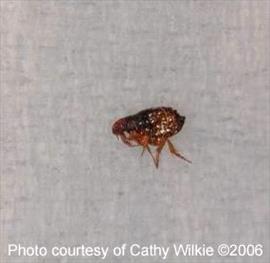
The short answer is not to waste money on these tests. Blood tests for allergy can detect antibodies against certain food proteins, but this does not necessarily mean the pet has an allergy. It may mean nothing more than the pet has eaten that type of protein before. Furthermore, the pet’s body may alter a food protein during digestion, and it is the altered protein that generates the allergy. There is no predicting how a protein could be altered and thus no test can be devised for altered proteins. Laboratory tests are simply not valid for determining if a pet has an allergy to a certain type of food.
Hypoallergenic Diet Trial
To determine whether or not a food allergy or intolerance is causing the skin problem, a hypoallergenic diet is fed for a set period. If the pet recovers, the original diet is fed for up to two weeks to see if itching resumes. (Actually, exposure to an allergen generally leads to itching within 12 hours, but it takes two weeks to be completely sure.)
If we see recovery with the test diet and itch with the original diet, then food allergy is diagnosed, and the pet is returned to either the test diet or another appropriate commercial food indefinitely.
There is no other way to determine if a pet has a food allergy. Blood tests are not useful.
Before reviewing diet strategies for this process, here are some additional concerns:
- The diet must be strict (meaning the pet should not have any other protein sources besides the test protein). This includes rawhides and chew toys, flavored chewable medications (these will need to be changed for unflavored tablets) and vitamins, and treats.
- All family members must be on board with the trial. No one should be giving the pet other foods or treats when no one else is looking.
- It is probably best for all animals in the house to be fed the test protein so as not to have food-sharing issues.
- Itching must be managed during the trial in a way that the results of the trial are not foiled.
- Diet trials often span a season change period. If a dog has a pollen allergy and winter comes during the period of the diet trial, it may appear that the diet worked when, in fact, the seasons simply changed. This is why a diet challenge is important at the end, even if the pet is doing well.
- The diet trial will take eight weeks. Most animals will respond in three to four weeks, but to be sure, you will need to feed the test diet for two months.
What Is a Good Hypoallergenic Diet?
There are two approaches to test diets: novel protein and hydrolyzed protein. Traditionally, a novel protein is used. This is a diet with a single protein source that the patient has never eaten before. It typically takes years to become allergic to a food protein so the patient should not be allergic to something new.
Fortunately, many pet food companies have discerned the need for diets using unusual protein and carbohydrate sources with a minimum of additives. Foods can be obtained based on venison and potato, fish and potato, egg and rice, duck and pea, and even kangaroo. Diets used for allergy trials must contain one protein and one carbohydrate source, and neither can be something the pet has had before. Recently, several diets that include duck, venison, and so on have been released to the general market. Be aware of foods that contain these ingredients because these ingredients will not be useable for future diet trials if they are ever used in the pet’s regular food.
It is important that no unnecessary medications are given during the diet trial. No edible chew toys (such as rawhides or bones) should be given. Treats must be based on the same food sources as the test diet. (Beware of rice cakes, though, as wheat is commonly used as a filler.) Chewable heartworm preventives should be replaced with tablets or topicals.
Over-the-Counter Food? Therapeutic Diet? Home Cooked?
Recently several pet food companies have released single protein diets for over-the-counter sales. These tend to cost less than the therapeutic diets available from your veterinarian’s office directly. While these diets are attractive, they are probably not a good choice for an actual diet trial. Immunological tests on these foods found that many of them contain additional proteins (probable contaminants from prior batches in the pet food factory). These impurities could defeat a diet trial which is hard enough to perform without such issues. The therapeutic diets did not have these contaminants.
Home cooking is a fine alternative to commercially prepared foods for the diet trial. The problem is that the test diets will most likely not be balanced but for the 2 months or so of testing, this should not be a problem. Home cooking is a bit of an inconvenience, but for the right person, it is a good choice. Ideally, a nutritionist should be involved in designing the diet. Recipes for appropriate diets can be purchased through BalanceIt, Petdiets.com or by any nutritionist listed at the American College of Veterinary Nutrition website.
The Hydrolyzed Protein Method
Several therapeutic diets are made from hydrolyzed proteins. This means that a conventional protein source is used but the protein is broken down into molecules too small to excite the immune system. There are various hydrolyzed diets on the market; discuss with your veterinarian which is best for your pet.
Trial Diet Timeframe
Studies have shown that 80 percent of dogs will have shown a response by 4 to 6 weeks on the diet, but by extending the diet to 8 weeks, 90 percent will respond. The Labrador retriever and cocker spaniel appear to require longer trials. Most veterinary dermatologists recommend 8 to 12 weeks, which is a long time to be strict on the diet, but that is the only way to detect food allergic dogs.
Most commercial diets used in food allergy trials have a 100 percent guarantee. This means that if your pet doesn’t like the food, the food can be returned for a complete refund, even if the bag is opened. This is especially helpful for feline patients, as cats are famous for being choosy about what they are willing to eat.

What To Do if the Diet Is Successful?
To confirm food allergy, return to the original food; itching generally resumes within 14 days if food allergy was truly the reason for the itchy skin. Many people do not want to take a chance of returning to itching if the patient is doing well; it is not unreasonable to simply stay with the test diet if the pet remains free of symptoms. Often it is difficult to remember 10 to 12 weeks later how itchy the dog used to be before the diet trial. The diet challenge helps make it more obvious whether the diet trial has worked or not.
It is possible to more specifically determine the identity of the offending foods after the pet is well. To do this, a pure protein source (such as cooked chicken, tofu, wheat flour, or any other single food) is added to the test diet with each feeding. If the pet begins to itch within two weeks, then that protein source represents one of the pet’s allergens. Return to the test diet until the itching stops, and try another pure protein source. If no itching results after two weeks of feeding a test protein, the pet is not allergic to this protein.
What To Do if the Diet Is Unsuccessful?
Assuming secondary skin infections have been controlled, an unsuccessful food trial is strongly suggestive that an inhalant allergy is a primary problem, but some other considerations should at least be mentioned:
- Are you certain that the dog received no other food or substances orally during the trial?
- Was sarcoptic mange ruled out?
- Your pet may require a longer diet trial. Are you certain regarding the factor that pointed toward the food allergy?
If your pet has not been biopsied, now may be a good time. If an inhalant allergy has risen to the top of the list, symptomatic relief either via medication, baths with specific shampoos, or allergy shots will likely be necessary. Chronic itchiness can be extremely uncomfortable and prompt relief is our goal as well as yours.

